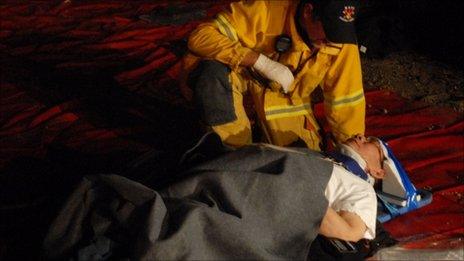Philadelphia train crash: Amtrak rail accident kills seven
- Published
Eyewitness Edwin says he heard a 'big bang' when the train derailed
Officials are working to determine the cause of a train derailment which killed at least seven people and injured more than 200 others.
Seven carriages including the engine of the Amtrak train bound for New York went off the track on Tuesday evening.
Over 200 people have been treated in area hospitals, says Mayor of Philadelphia Michael Nutter.
Investigators are searching the wreckage in order to confirm that all on board have been accounted for.
Part of the US's most travelled stretch of passenger rail between Philadelphia and New York is closed as officials continue to try to determine the cause.
US media report that the train was travelling over 100mph (160km/h) as it entered a sharp curve in the track - twice the local speed limit.
President Obama called the section of rail, "a way of life for many" and that he was "shocked and deeply saddened to hear of the derailment".
Only two victims have so far been publically identified so far:
Jim Gaines, a 48-year-old father of two and software architect for the Associated Press, was travelling home to New Jersey following a work conference in Washington DC.
Justin Zemser, a-20 year-old Navy Midshipman, was on leave from the Naval Academy in Maryland, and was visiting family in New York.
The National Transportation Safety Board has dispatched a team to the crash site on Wednesday, but they stress the priority is to confirm that all passengers are accounted for before the investigation into the cause of the crash begins.
The train recorder has been found and the information, including train speed, video of the accident, and the engineers steering attempts, is being downloaded. More than 240 people were on board Train 188, officials said.
NTSB representative Robert Sumwalt says that recorder will be "key to the investigation".
The train engineer was also injured in the crash, and is giving a statement to city police, says Mayor Nutter.
'Mangled up'
The train derailed where the tracks curve in the city's Port Richmond section, shortly after leaving the city's main station.
At least eight of the victims were listed as being in a critical condition at local hospitals.
Most of the injured sustained fractures, said Dr Herbert Cushing of Temple University Hospital, where many of the victims were treated.
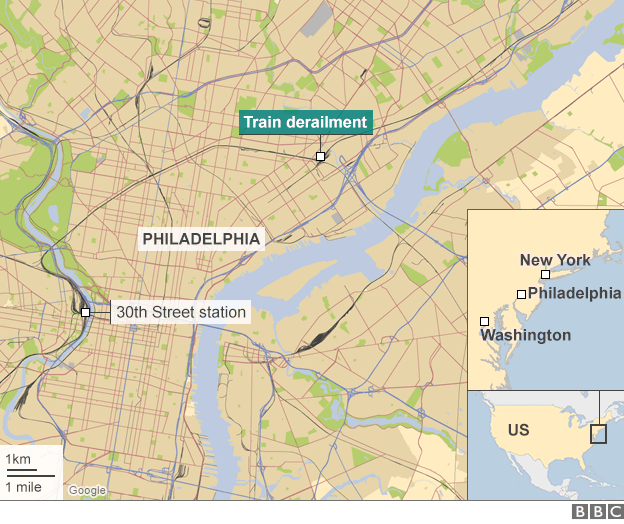

More than 240 people were on board the Washington-New York train, officials say

One witness said the front of the train was "a complete wreck"

The train crashed close to the scene of one of the worst train crashes in US history
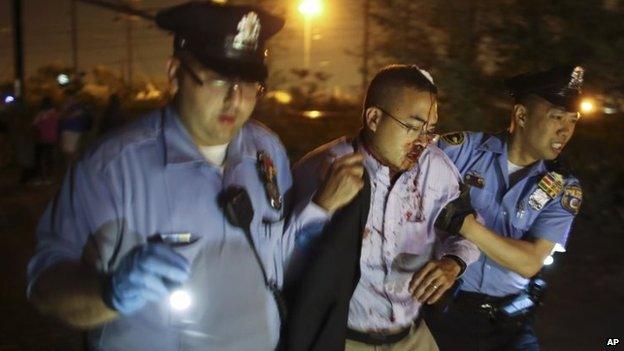
Dozens of people were taken to hospital, six in a critical condition
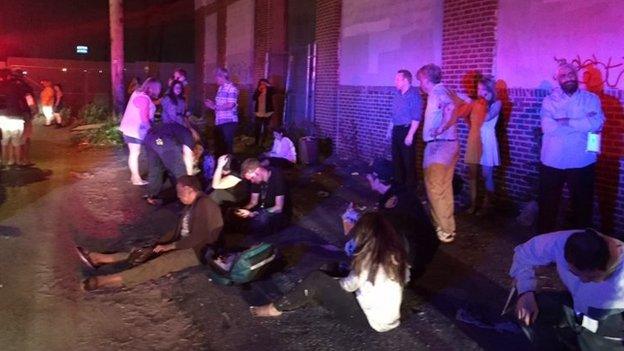
Some passengers managed to leave the train unassisted
"It is a devastating scene," Philadelphia Mayor Michael Nutter told reporters. "Never seen anything like this in my life.
"We walked the entire length of the train area. The engine [is] completely separated from the rest of the train and one of the cars is perpendicular to the rest of the cars. It's unbelievable."
Philadelphia Mayor Michael Nutter gives details of the derailment
Daniel Wetrin was among more than a dozen people taken to a nearby elementary school afterwards.
"I think the fact that I walked off (the train) kind of made it even more surreal because a lot of people didn't walk off," he said. "I walked off as if, like, I was in a movie. There were people standing around, people with bloody faces. There were people, chairs, tables mangled about in the compartment ... power cables all buckled down as you stepped off the train."
The crash took place close to the scene of one of the worst rail accidents in US history. In 1943, 79 people were killed when a train travelling from Washington to New York derailed.
Amtrak is a national publicly funded rail service, serving tens of millions of people every year.
- Published13 May 2015
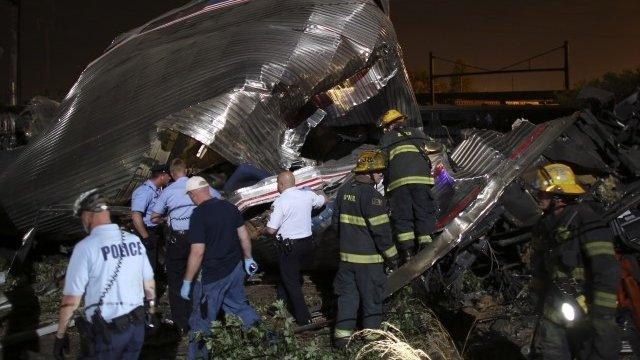
- Published18 May 2013
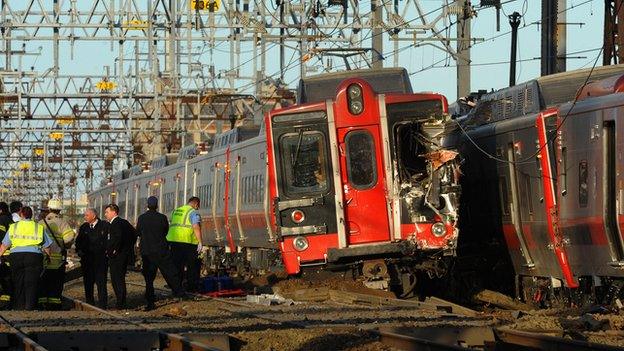
- Published18 May 2013
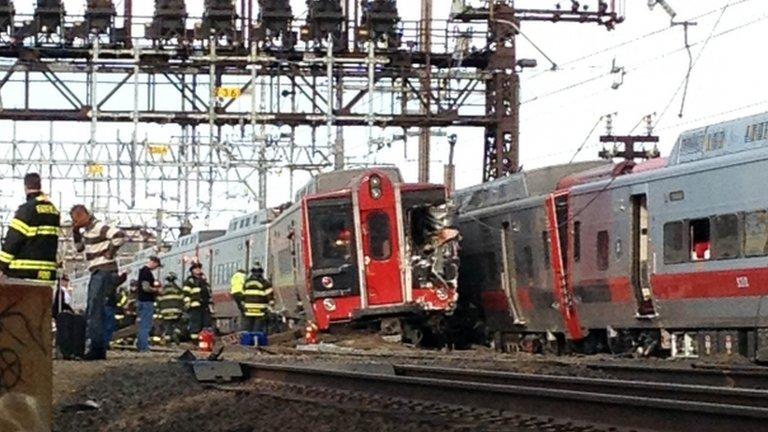
- Published13 October 2011
